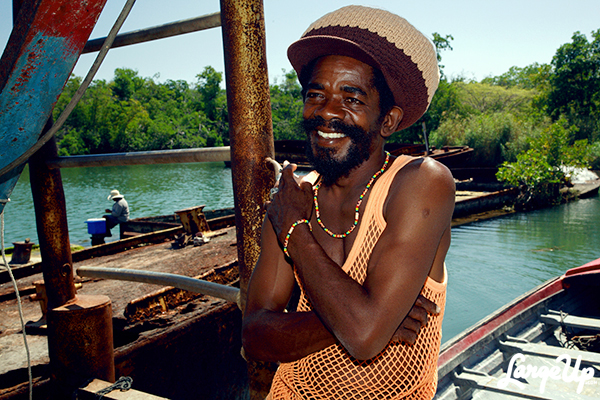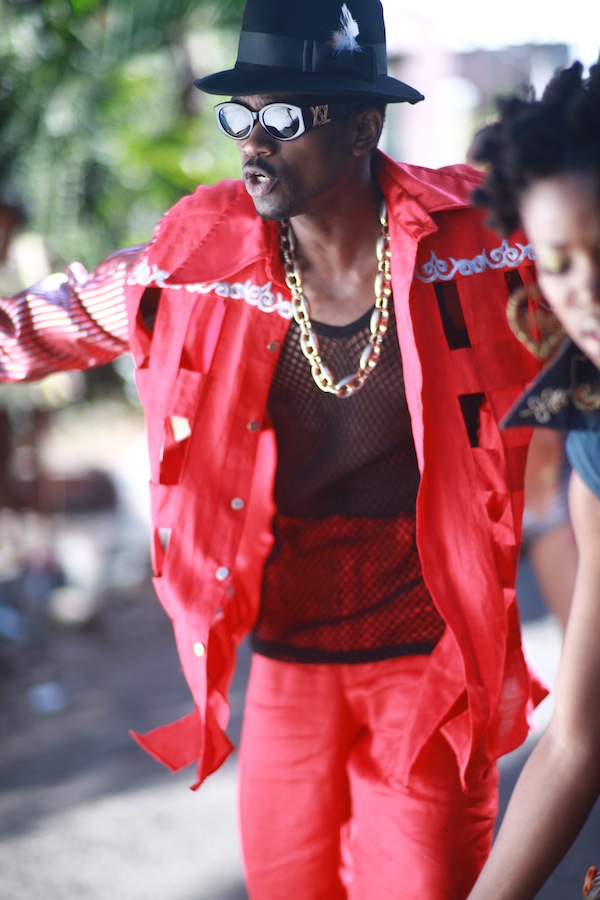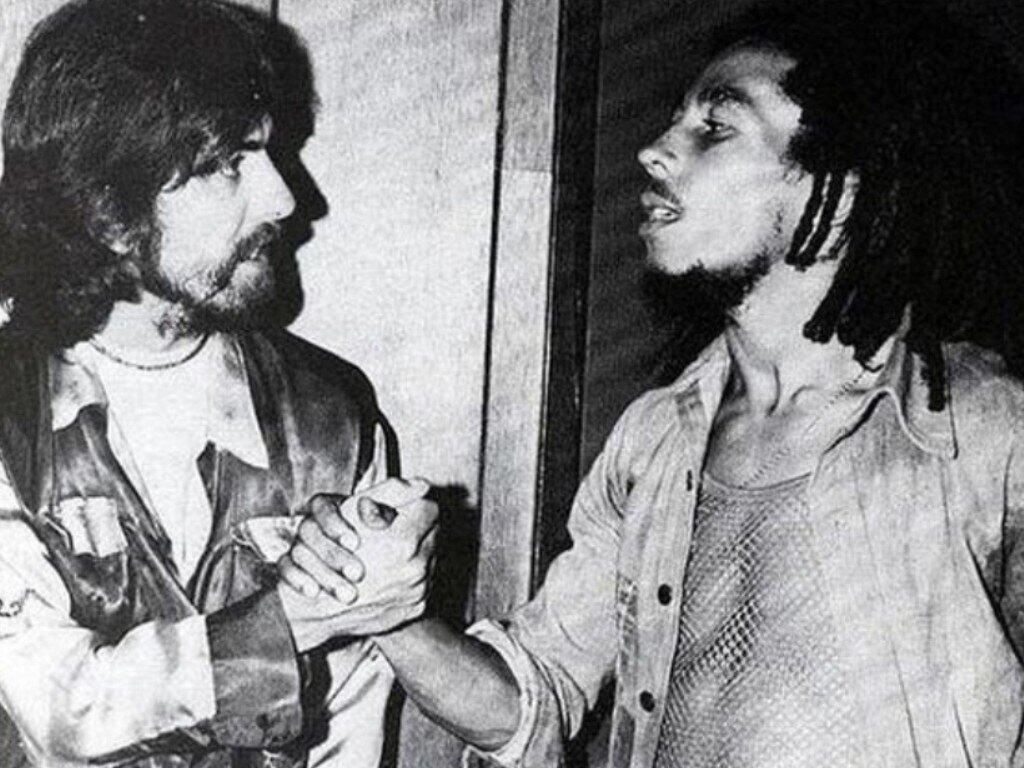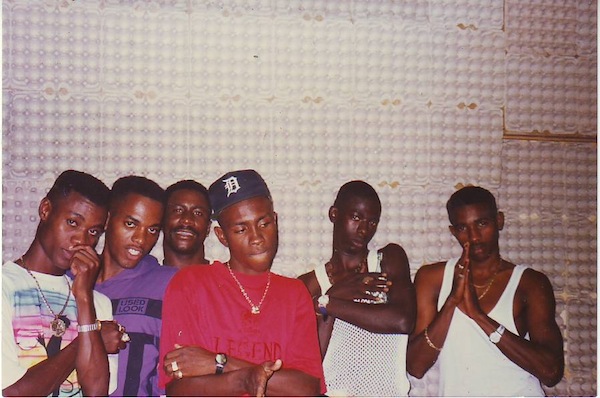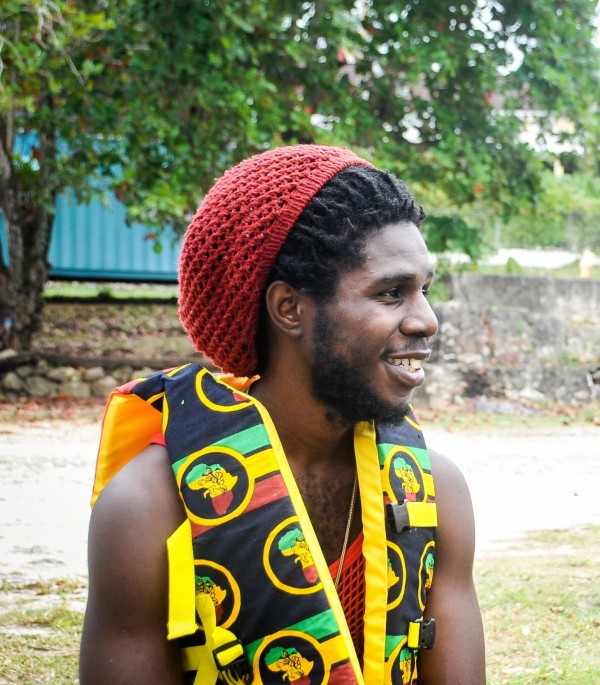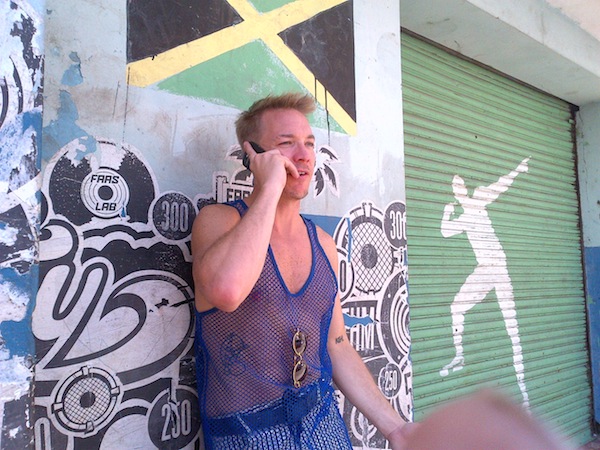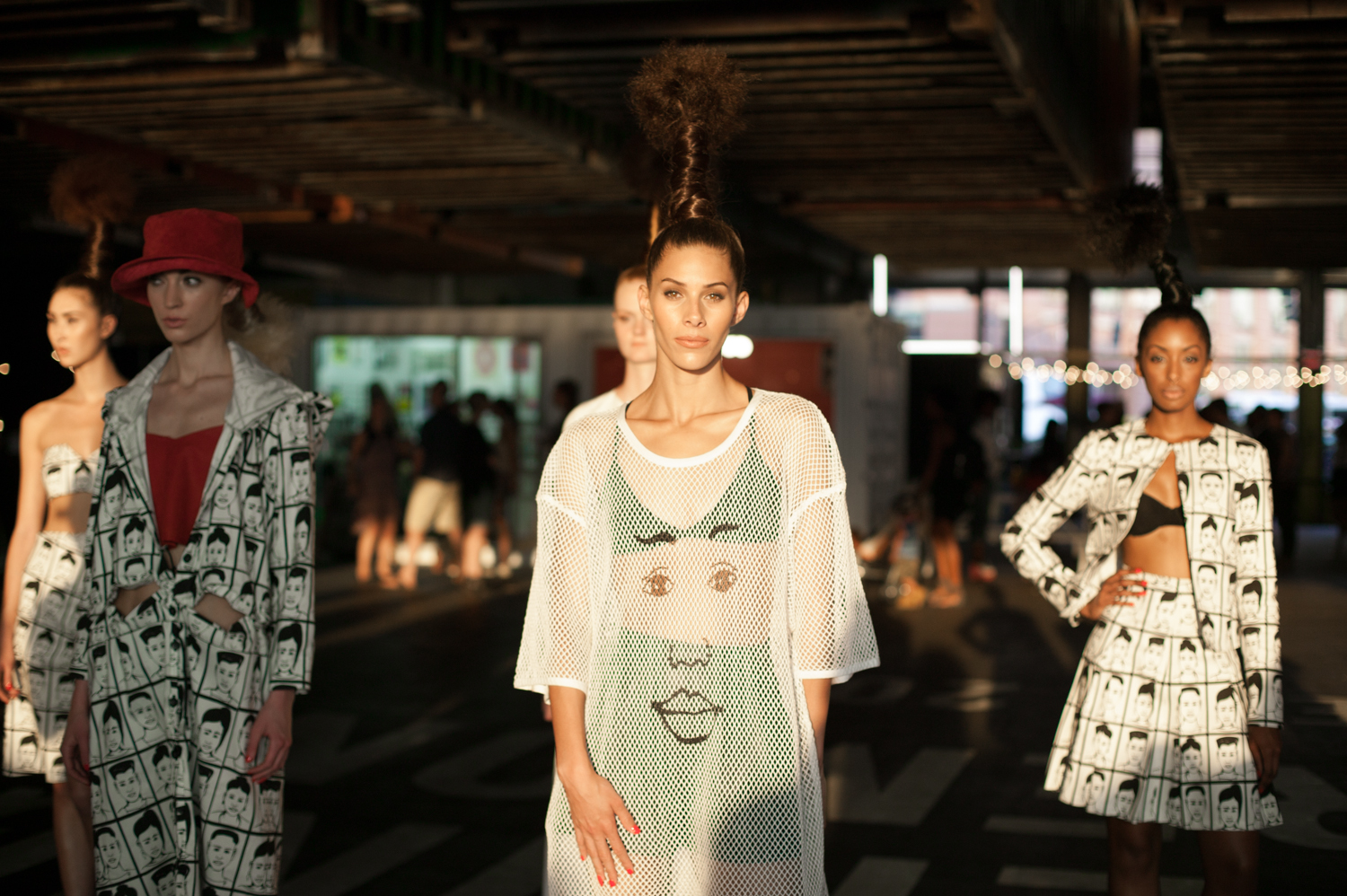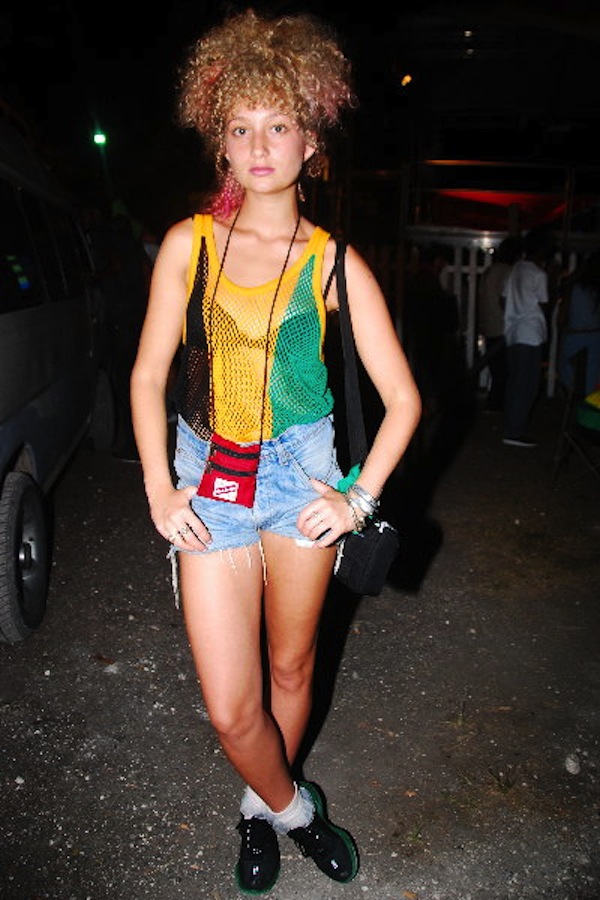
George Harrison and Bob Marley
The exportation of the style to the British Caribbean Colonies in the 1950s took particular hold in Jamaica, where string vests took on new meaning in the hot climate. The expansion of the style in Jamaican culture was further expressed in post-colonial Jamaica’s street culture where the undergarment became a staple. The “rude boy”– a colloquial term for a strong arming or a discontent young Jamaican man– embraced the garment. The marina became symbolic of the rebellious nature of the “rude boy”, who wore his undergarment as outerwear, aligning the garment with street culture. Reggae music put this rebellious culture onto an international platform, further popularizing the mesh marina as it was frequently spotted under the button downs of iconic reggae artistes like Bob Marley and Gregory Isaacs.
While the mesh marina never really disappeared, the rise of dancehall led to a new use of the top, giving it a definitive resurgence in the late ‘80s and early ‘90s with artistes like Buju Banton and Terry Ganzie– whose name is taken from the term “ganzie,” meaning shirt/top in Jamaican patois– and dancers like Bogle and the Black Roses Crew, who revolutionized dancehall fashion with outrageous ensembles. Wearers now shed the button down and sported it as a top alone. Jamaican designer James Black of the label Yahdie Conscious was a young girl in the early nineties and recalls being perplexed by the style. “My first memory of mesh marinas was in prep school, and this guy actually came to a ‘fun day’ in one and I was like, ’that’s so crazy, I can see your nipples.’ To me, it was like, ‘you’re wearing this to an event?’”

